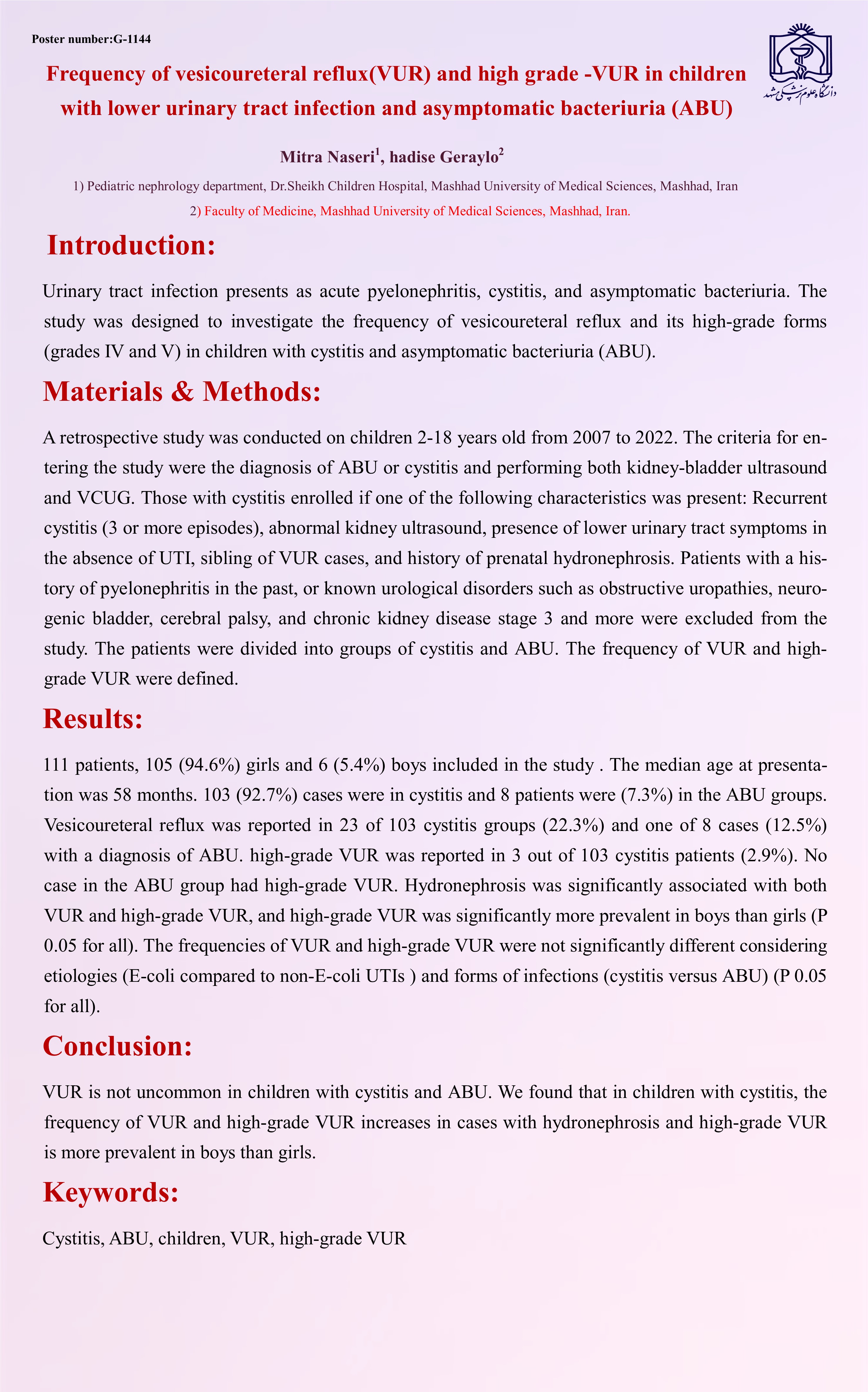فراوانی رفلاکس وزیکواورترال و فرمهای شدید آن در کودکان با عفونت سیستم ادراری تحتانی و باکتریوری بدون علامت
کد: G-1144
نویسندگان: میترا ناصری © ℗, حدیث گرایلو
زمان بندی: زمان بندی نشده!
دانلود: دانلود پوستر
خلاصه مقاله:
خلاصه مقاله
Introduction: Urinary tract infection presents as acute pyelonephritis, cystitis, and asymptomatic bacteriuria. The study was designed to investigate the frequency of vesicoureteral reflux and its high-grade forms in children with cystitis and asymptomatic bacteriuria (ABU).Materials & Methods: A retrospective study was conducted on children 2-18 years old from 2007 to 2022. The criteria for entering the study were the diagnosis of ABU or cystitis and performing both kidney-bladder ultrasound and VCUG. Those with cystitis enrolled if one of the following characteristics was present: Recurrent cystitis ( 3 or more episodes ), abnormal kidney ultrasound, presence of lower urinary tract symptoms in the absence of UTI, sibling of VUR cases, and history of prenatal hydronephrosis. Patients with a history of pyelonephritis in the past, or known urological disorders such as obstructive uropathies, neurogenic bladder, cerebral palsy, and chronic kidney disease stage 3 and more were excluded from the study. The patients were divided into groups of cystitis and ABU. The frequency of VUR and high-grade VUR were defined. Results: A total of 111 patients including 105 (94.6%) girls and 6 (5.4%) boys included in the study. The median age at presentation was 58 months. 103 (92.7%) cases were in cystitis and 8 patients were (7.3%) in the ABU groups. Vesicoureteral reflux was reported in 23 of 103 cystitis groups (22.3%) and one of 8 cases (12.5%) with a diagnosis of ABU. high-grade VUR was reported in 3 out of 103 cystitis patients (2.9%). No case in the ABU group had high-grade VUR. Hydronephrosis was significantly associated with both VUR and high-grade VUR, and high-grade VUR was significantly more prevalent in boys than girls (P 0.05 for all). The frequencies of VUR and high-grade VUR were not significantly different considering etiologies (E-coli compared to non-E-coli UTIs ) and forms of infections (cystitis versus ABU) (P 0.05 for all). Conclusion: VUR is not uncommon in children with cystitis and ABU. We found that in children with cystitis, the frequency of VUR and high-grade VUR increases in cases with hydronephrosis and high-grade VUR is more prevalent in boys than in girls.
کلمات کلیدی
children, VUR , high-grade VUR , cystitis , ABU
